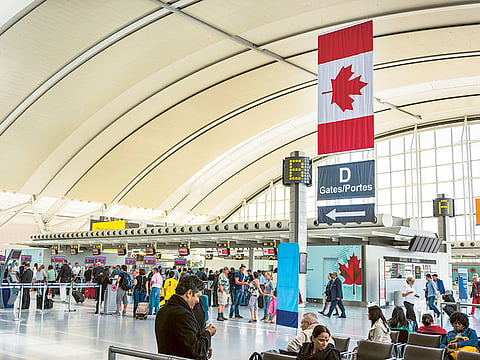Immigrants lead Canada's population growth
North American country leads G7 on growth rate, according to latest census data

Montreal: Thanks to a large influx of immigrants, Canada had the largest population growth of all Group of Seven countries over the past five years, government statistics showed Wednesday.
The first data available from last year’s census shows that Canada now has a population of more than 35 million — 1.7 million (or five percent) more than in the 2011 census.
About two-thirds of this population increase can be attributed to immigration, with natural population growth representing the other third, according to Statistics Canada.
“In the coming years, population growth in Canada is projected to be increasingly linked to migratory increase rather than natural increase, mainly because of low fertility and an aging population,” the statistics agency said.
In the fall, the government set a ceiling on immigration at 300,000 people a year.
The birth rate in Canada hit 1.6 children per woman in 2016, as compared with 2.9 children per woman in the mainly Inuit territory of Nunavut, which recorded the highest rate of population growth of all Canadian provinces and territories at 12.7 percent.
Canada had already led the G7 in terms of population growth for the previous periods of 2001-2006 and 2006-2011.
The three largest cities in Canada are Toronto at 5.9 million, Montreal at four million and Vancouver at 2.4 million.
Sign up for the Daily Briefing
Get the latest news and updates straight to your inbox

